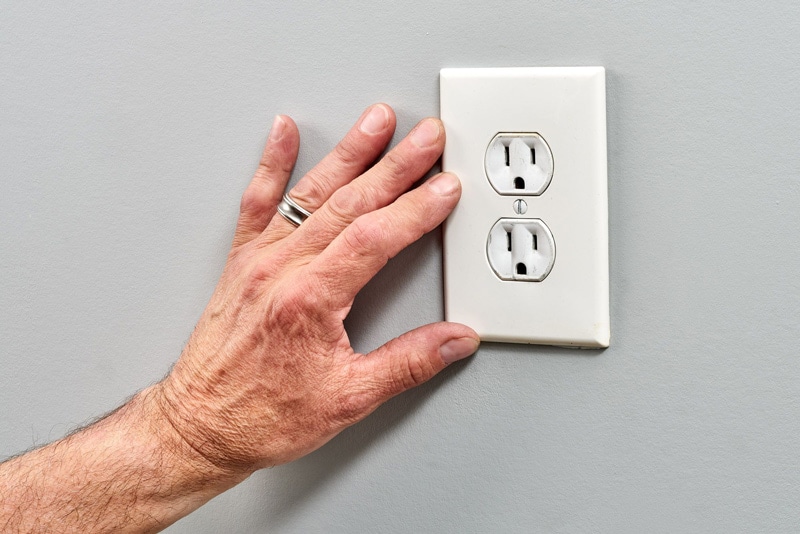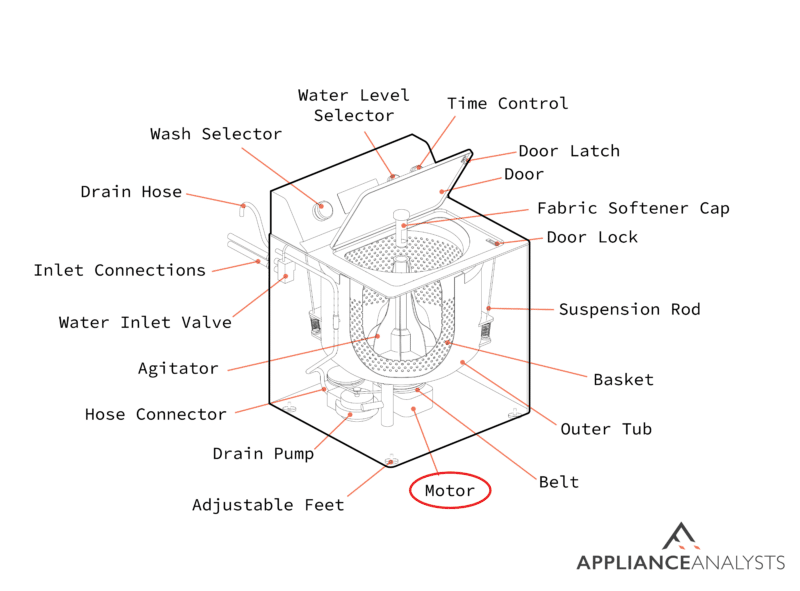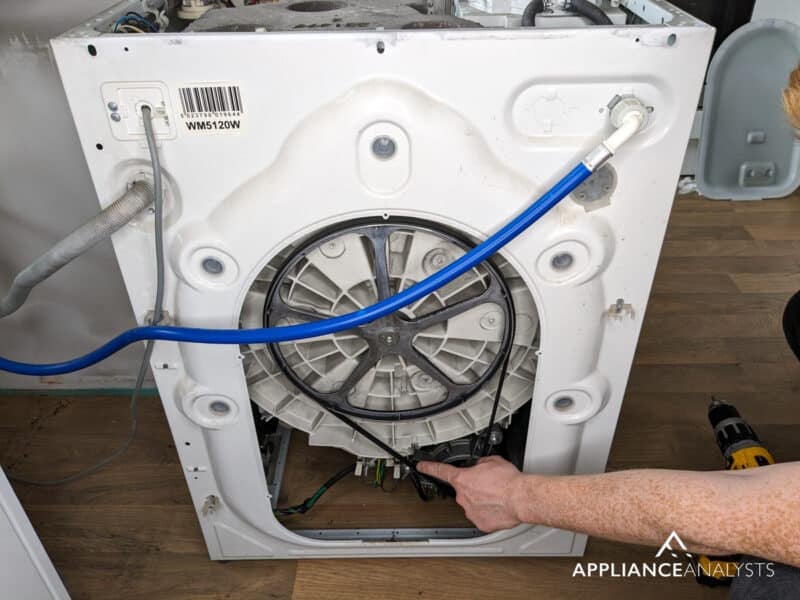Is your portable washing machine not working, and it’s driving you up the wall?
That sucks! A portable washing machine is a lifesaver for people living in spaces that can’t accommodate a traditional one. After all, lugging your dirty clothes to the nearest laundromat is a pain.
I know how annoying it can be to have your portable washing machine stop working – you probably already have a basket of dirty laundry.
But don’t worry; you’ve come to the right place for answers. Below, you’ll find a list including the 4 most common causes and fixes to address your portable washer troubles.
When your portable washing machine is not working, you’ll want to check the appliance’s power supply, motor, and belt.
Read on for fresh clothes!
Why Your Portable Washing Machine Is Not Working
When your portable washing machine is not working, there’s sadly no cookie-cutter approach to fixing it. But, in my opinion, there are some common culprits that you’ll want to check first.
Make sure to take your time to read every section carefully and stop at any moment that you feel uncomfortable or unsure about what you’re doing.
#1 Check the Power Supplies
When your portable washing machine is not working, you’ll want to look closer at your power supplies. The issue could be a faulty wall outlet, a damaged power cord, or a glitch.
Although the former two solutions require more observation, a glitch can be easily resolved by simply unplugging the washing machine from the wall and plugging it back in after a few minutes.
Provided your portable washer is still not spinning after the manual reset, you can safely move on to considering the power cable/wall outlet as the culprit.
A very obvious sign that there’s something electrical failing is tripped circuit breakers and/or a burning smell when you’re using your appliance. My usual advice when there’s suspicion of an electrical failure, is to stop using the washing machine until the issue is resolved.
Note: Portable washers should always be plugged into a grounded three-prong outlet, so never opt for an extension cord or similar.

#2 Check the Motor
A faulty motor could also explain why your portable washing machine is not working. Like most machines, a portable washer’s motor can overheat if used incorrectly, for too long, or while exceeding the maximum load capacity.

If your portable washing machine mysteriously stops working after a successful wash, overheating is likely the problem. Provided overheating is to blame, please let the machine sit and cool for a few minutes – if the motor was overheated, it should turn off and work later.
If your portable washer overheats once or twice in its lifetime, you have nothing to worry about. However, if it’s a recurring problem, I recommend contacting a professional or replacing the washer.
#3 Check the Belt
Like cars, washing machines use belts to keep their moving parts running and connected. If you’re getting soaking wet clothes or even dirty garments after months of clean clothes, chances are your portable washer’s belt needs attention.

Checking the washing machine’s belt requires some tools, but it isn’t a particularly difficult task. First, you’ll want to locate your machine’s engine. From what I’ve seen over the years, the belt will likely be on the back or bottom of the washing machine, behind a door or panel.
You’ll need to remove said panel to get to the root of the problem. To remove the panel, you may need to break out a power drill and follow the steps below:
- Using the drill, remove the screws and keep them in a safe place. Don’t lose the screws!
- With the panel out of the way, locate the belt. You can visually inspect the belt or even touch it and see how it feels.
- You may have a guard in front of the belt, and it will likely have a bolt on the pulley as well. You’ll need to remove both the guard and the bolt.
- Once all barriers are removed, the belt should slip easily off. Carefully stretch the new belt over the pulley and pop it back into place. Replace any bolts and guards after that.
If the belt looks visibly stretched out or floppy, it’s time to retire it. You can buy a replacement belt at your local home improvement store. Provided you can’t find the right belt, you can always go to an online marketplace and look for the part using your washing machine’s model number.
If you want to get any replacement part – or see how much one would cost – click to enter your model number in the search bar below. Our partners at AppliancePartsPros stock almost every part with free guides on how to install them.

#4 Call a Professional
Unfortunately, bringing in a professional isn’t a quick fix for your portable washing machine, but if you’ve already tried everything to no avail, chances are the issue is more complex.
Check your portable washer’s manufacturer’s website for contact information regarding a repair technician in your area, or use our resource below!
How Do Portable Washing Machines Work?
Portable washing machines can be set up in any room with a sink. Most people opt for the kitchen, but the tub in a bathroom also does the job.
A portable washing machine utilizes the sink or tub for a water source and drainage. Your appliance will likely have two tubes; one is designated for clean water, and the other for emptying used water. Some machines, though, will have a single tube pulling double duty.
Much like a traditional washer, a portable washing machine has a large tub that spins the laundry clean. Portable washers also require laundry detergent; some models may even dry your clothes!
Conclusion
When your portable washing machine is not working, the simple task of doing a week’s worth of laundry can be an annoying and challenging process.
Luckily, as I hope this piece has helped you better understand, in most cases, you can get your portable washing machine working again by simply replacing the belt inside it and tending to the motor occasionally.
Thanks for reading. If this article proved helpful, please check out our other incredible resources below and consider subscribing to our newsletter.
Happy washing!
-Craig.








